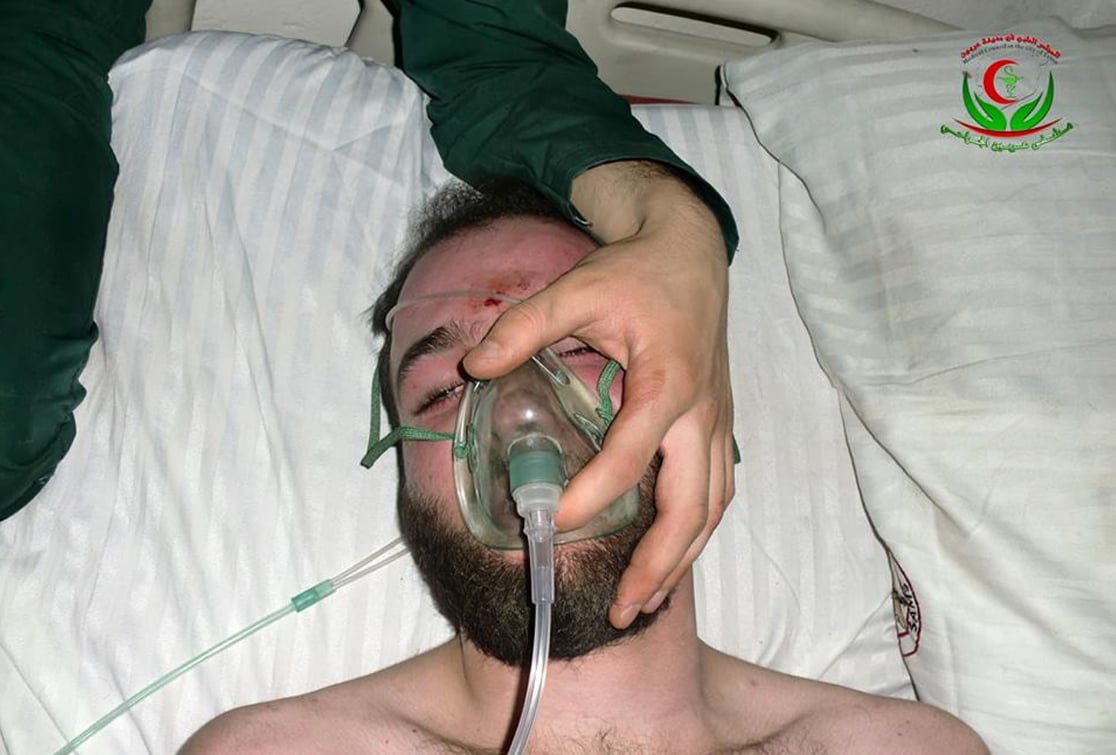“Russia’s Inadequate Assurance”

SNHR issued its 24th documentation report about the use of chemical gases in Syria by government forces mainly. The report stated that after the chemical attack on Al Ghouta on 21 August 2013, Russia assured that the Syrian regime will hand over its chemical weapons and will cease its use to it. According to those statements, the US pulled back its efforts from disciplining the regime since it crossed the “red line” that were drawn by President Obama. On 27 September 2013, UNSC issued a resolution that stated that “in case of not abiding to the provisions of resolution 2118, measures will be imposed under Chapter VII of the Charter of the United Nations.” However, all of SNHR’s evidence indicate that the Syrian regime have violated UNSC resolutions 2118, 2209 and 2235. Russia did not commit to its assurance before the United States in deterring the Syrian regime from using toxic gases. On the other hand, the US was impotent from performing any action. Therefore, Syrian people cannot trust a Russian “guarantee or assurance” to any political solution of a cease-fire in Syria if it had failed miserably in managing the use of toxic gases.
According to the report, all of that toxic gas attacks were perpetrated by the Syrian regime and ISIL started to use toxic gases on 21 August 2015 for the first time when it attacked Maree’ City in Aleppo.
The report stated that its team was not able to visit and collect samples from regions shelled with toxic gases, they relied on survivors and eyewitnesses testimonies, Civil Defence members and doctors who treated the injured people. Also, they examined videos and images sent to use by their local activists. The report depicts the latest 8 toxic gas attacks by government forces since 1 August 2015 and up till 31 December 2015. In addition to those new eight incidents, the total number of violations for resolution 2118 issued on 27 September 2013 is 135 breaches, and 66 breaches for resolution 2209 issued on 6 March 2015. Government forces violated resolution 2118 one hundred and thirty three times, amongst which 64 breaches were documented for resolution 2209. Further, ISIL violated resolutions 2118 and 2209 two times.
According to the report, the chemical attacks were the greatest in Idlib, then Damascus suburbs and Hama. These attacks killed 87 individuals, detailed as follows: 35 civilians including 19 children and 6 women, 45 armed opposition members and 7 prisoners from government forces. Additionally, not less than 1867 individuals were injured and affected.
The report assured that the use of chemical or toxic substances is internationally prohibited under all circumstances including times of war and clashes. Also, using Chlorine gas is considered a breach to UNSC resolutions 2118 and 2209 and to the agreement that was signed by the Syrian government on 14 September 2013 which prohibits the use of toxic gases and its demolition.
The report recommended the International Independent Investigation Commission to investigate the incidents they can process at once, and take serious steps towards speeding the investigation of identifying the responsible of the use of this kind of weaponry, especially after the Syrian government signed an agreement on prohibiting chemical weapons.
– The report demanded the Security Council to shoulder its responsibilities in preserving the peace and security in Syria, as the violations committed by the Syrian government forms a grave threat to the peace and security of the world, and to stop playing the game of political interests on behalf of the Syrian people blood. And the Syrian regime obvious neglect of Security Council resolution 2118 and later resolution 2209 is a political disgrace and a terrible offence to the Security Council. Finally, the report demanded the Friends of Syria countries to supply the areas suffering from the poisoned gas shelling with protective masks (as the Security Council is unable to stop these attacks); SNHR estimates the need of these areas with at least 18700 protective masks, plus equipment to remove the chemical pollution effects.


